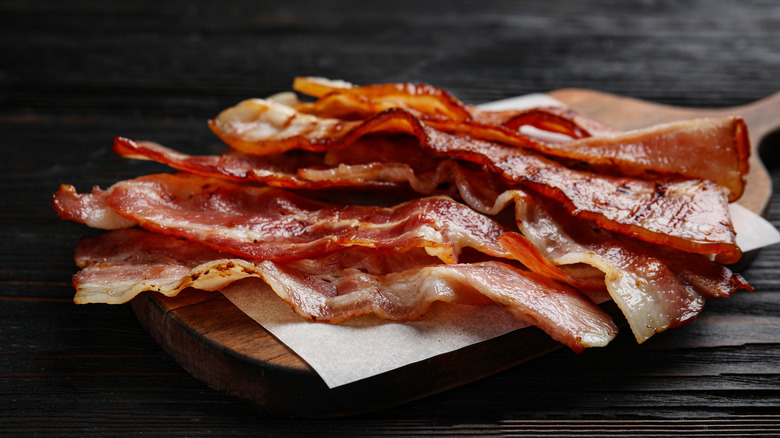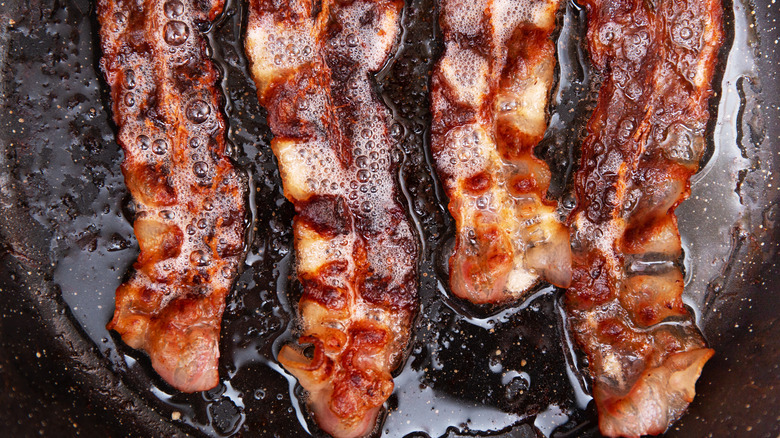Why You Should Never Cook Bacon In A Scorching Hot Pan
Some like their bacon extra thick and meaty, while others prefer frying it until it's crispy enough to crumble as soon as you take a bite. There's no right or wrong way to enjoy bacon — unless, of course, it's cooked unevenly. When that happens, you're left with bacon that's somewhere in between undercooked and overcooked. What that looks like, Eat This, Not That explains, is parts that are burned, meat that's rendered down to almost nothing, and rubbery fat, all in the same strip of bacon.
If your bacon is consistently turning out, well, inconsistent, there's a good chance it's because you're starting with a pan that's too hot. According to Food Network, it all comes down to the way fat cooks. In order for bacon to crisp up, the fat has to be cooked gradually. If the fat gets blasted with heat right away, the outside gets seared while the inside remains intact. Because the fat doesn't have the chance to melt in the pan, your bacon won't crisp up properly.
The type of pan you're using might also be the problem
Given that temperature is so important when it comes to cooking bacon, the pan you use also makes a difference. Even if you put the stove on the same heat setting, some types of pans get hotter than others and for properly cooked bacon, you want one that stays cold longer.
Per Southern Living, a cast-iron skillet is the best option because it heats up slowly. Aluminum pans on the other hand, do the exact opposite, so it's best to stay away from them when you're cooking bacon.
Once you have the right pan, make sure to start off cold — don't turn the stove on until the bacon is already in. Hannah Hopkins, the executive chef at Bésame Steamboat (via Eat This, Not That), recommends cooking the bacon at medium low. The heat can be turned up higher when the fat renders out, but you definitely shouldn't start with a scorching hot pan if you're aiming for good bacon.

